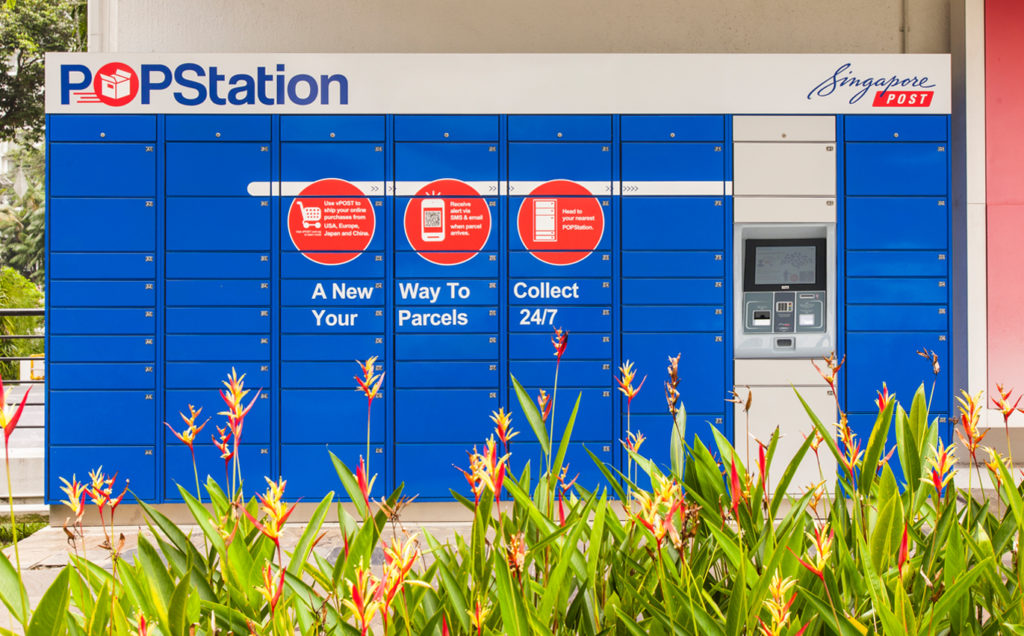Ian Kerr founder of the Postal Hub Podcast, and Marek Różycki, managing partner at Last Mile Experts, provide some clarity when comparing parcel lockers against PUDO networks
Clients often ask, “How many lockers are really needed for an ‘out of home’ (OOH) network?”
Unsurprisingly, the answer is… “It depends”. Lockers are simply an automated version of what a pick-up and drop-off (PUDO) point does, and that’s an important part of any answer.
Just like OOH is only one part of any complete last-mile service, together with a ‘to door’ offering, lockers (or automated parcel machines) are only a part of any complete OOH service.
Why is that? You may well ask. Well, lockers are expensive and need time to be installed, or removed. Isn’t the best solution to quickly achieve density via a traditional PUDO network and to then prudently add lockers in selected locations, over time, and develop a mixed network? Lockers can be used where suitable PUDO locations are unavailable, or where volumes are higher than a PUDO can handle (40+ per day is usually the limit for PUDOs, even at peak). Over time, lockers can be introduced in economically viable locations.
Surprisingly, many operators (including some of the most experienced players in the market) install 50 or 100 lockers in a country and then wonder why it doesn’t work? The answer is simple: lockers (or PUDOs for that matter) need density; unless they have reasonable national coverage for the sender, or are easily accessible for the consignee, they will surely fail. This implies several thousand units for a typical European country, and far more for large countries such as the USA or China.
Finding sites for parcel lockers can be difficult, which explains why partnerships with retailers are on the rise. Australia Post has signed a deal to put its parcel lockers in 500 Woolworths supermarkets across the continent. Amazon has a partnership with Pam supermarkets in Italy, meanwhile in Germany Amazon Lockers are located at Shell petrol stations, at retailers and in selected O2 shops.
While parcel lockers may be expensive to roll out, they do offer one advantage over most PUDO points, in that many can be accessed 24 hours a day, seven days a week. But then again, how many parcels are collected out of hours?
It is here that an initiative from the Post Office in the UK will provide interesting insights. New 24-hour post offices are being set up in London, operating in partnership with convenience stores. Will the additional opening hours entice Londoners to have their parcels sent direct to the post office with Royal Mail’s Local Collect service?
Failed first-time deliveries
For many postal operators, failed first-time deliveries are held at the post office for collection. Other carriers don’t have the luxury of a branded, nationwide bricks-and-mortar retail network. PUDO networks and parcel lockers could handle those failed first-time deliveries. Which is simpler from a technology perspective? And which costs the least?
Carrier neutrality
Another critical aspect of PUDO and parcel locker networks is carrier neutrality. While the original PUDO network – the post office network – is typically carrier specific, many other PUDO networks have agreements with multiple carriers.
Parcel lockers tend to be carrier specific or, in Amazon’s case, retailer specific – although that is changing with Amazon’s ‘The Hub’ apartment block parcel lockers.) SingPost’s POP Stations can be rented on an ad hoc basis, and Hive boxes in China are carrier agnostic, but these are the exceptions.
Same but different
Parcel lockers may be sexier than PUDO networks, but they are both solving the same problem in almost the same way.
Bio:
Ian Kerr is the founder and host of the Postal Hub Podcast, the weekly podcast for the postal and delivery sectors.

Marek Różycki is managing partner at Last Mile Experts, specializing in CEP and e-commerce last-mile advisory.
February 13, 2019



